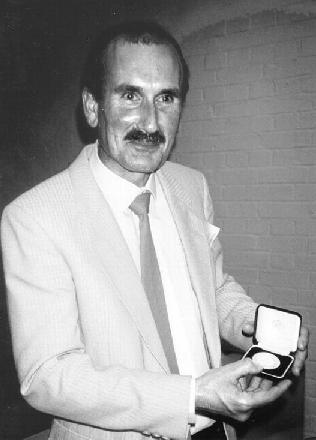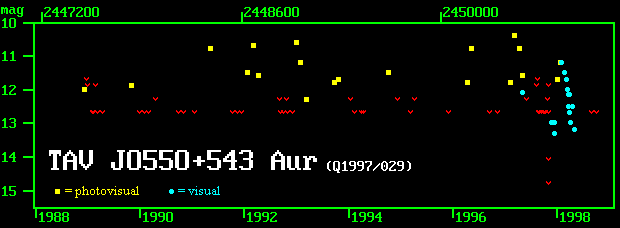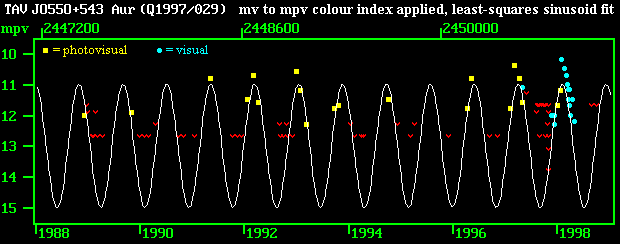
from VSSC99
Mike joined the UK Nova/Supernova Patrol in September of 1986 and initially
he was allocated the customary six nova areas for visual search. However he
later decided to move to checking wider areas of the Milky Way for novae by
photographic means. The standard equipment he uses comprises a 135mm
telephoto lens which broadly matches the ten degree fields of each nova
search area. Kodak 2415 film is used and it seems this turned out to be
significant later in the detection of red variables, which showed up as
'bright' when compared with earlier surveys, eg Harvard, which tended to use
blue plates. On a number of occasions Mike has come close to finding a nova,
and it has only been a prior announcement which has beaten him to it.

| However he has been extremely successful, as a by-product of the nova hunt, in the discovery of variable stars. The first were found in 1989, and during that year 31 possible variables were recorded. Where negatives were submitted to the Editor, preliminary designations were assigned, either TAV, where variation was confirmed, or TASV if suspected only and further investigation was needed. As at June 1998, 157 stars have been found, although some are old suspects, normally 'NSV' objects, which have been independently recovered. Of this total 93 objects still need to be investigated and documented but even amongst the remainder we still need further observations to determine their type. Our aim is to achieve enough results to prepare a case for the object to be formally entered in the GCVS and there is an enormous amount of work to do! Please contact Gary Poyner or myself if you can help! |
Here is the lightcurve of one of Mike's discoveries; TAV J0550+543, and below is his sinusoid fit of JD 2447461.50 (+/-2.97) + 307.48E (+/- 0.12)

